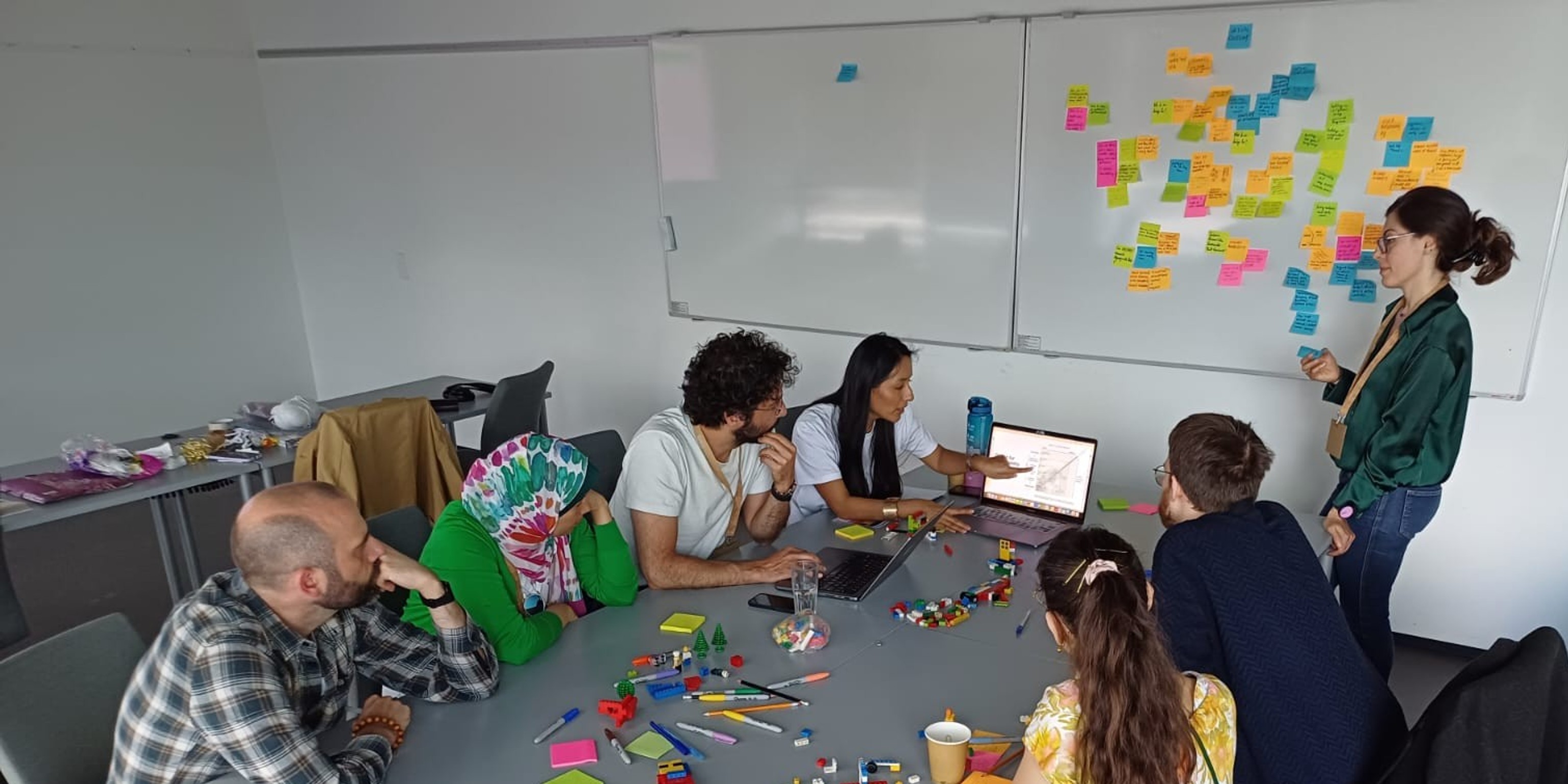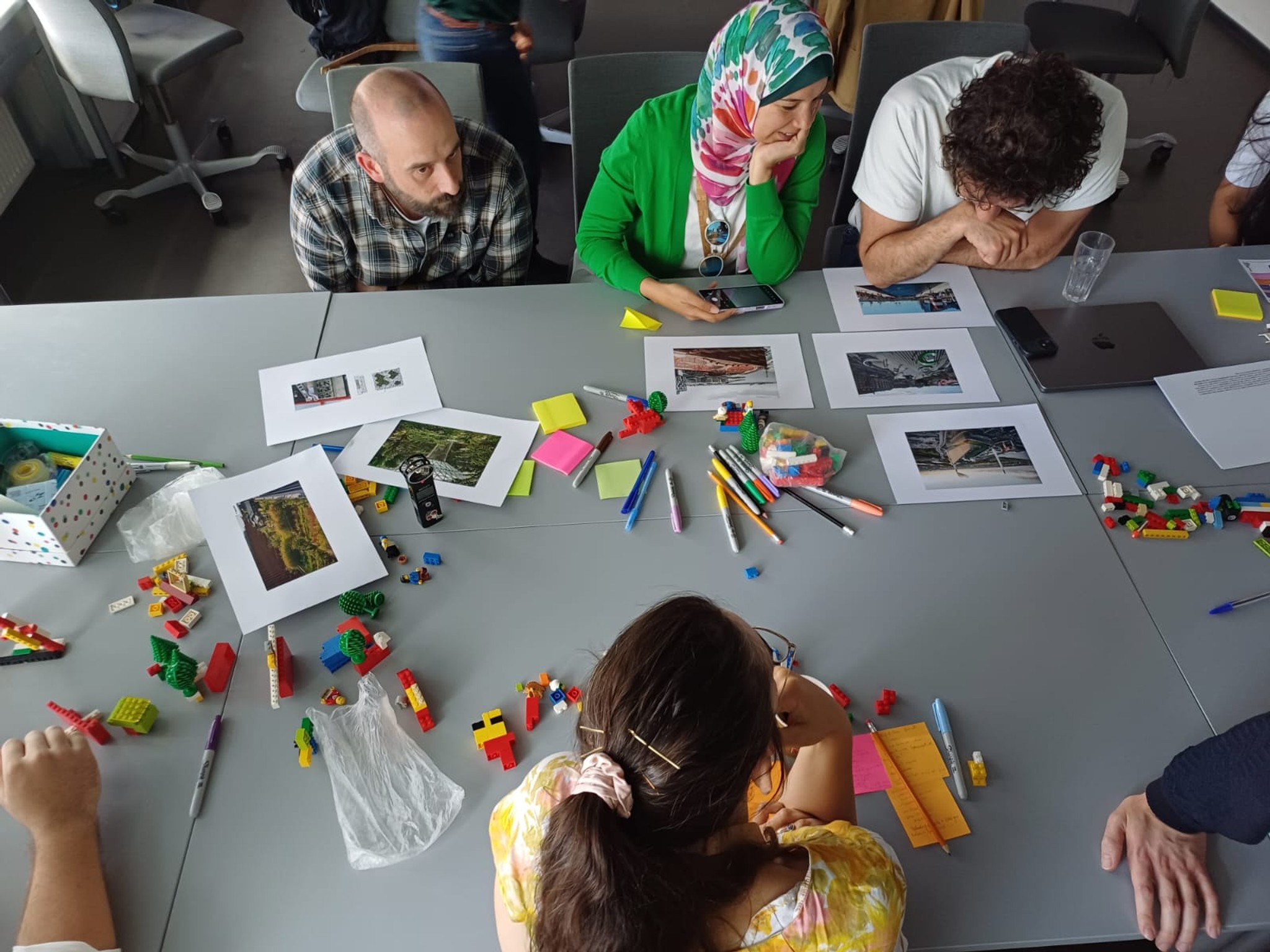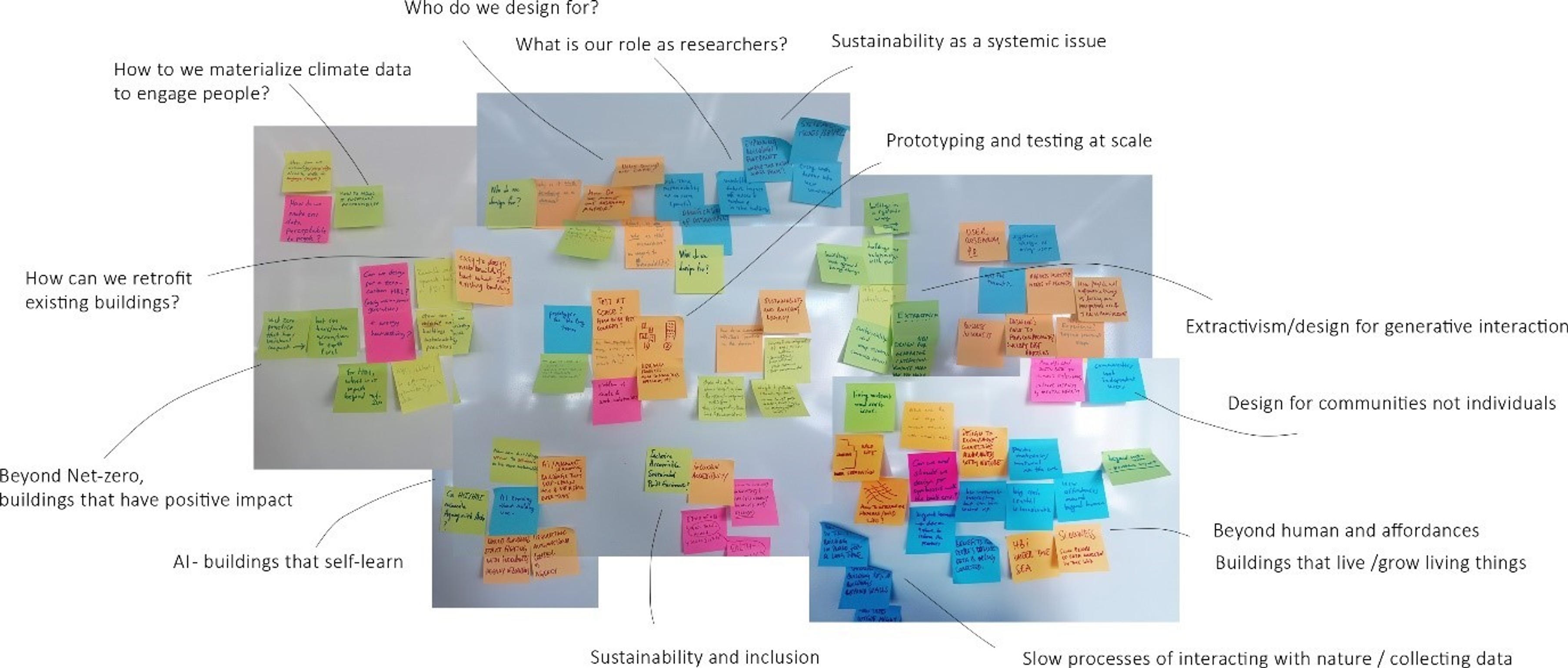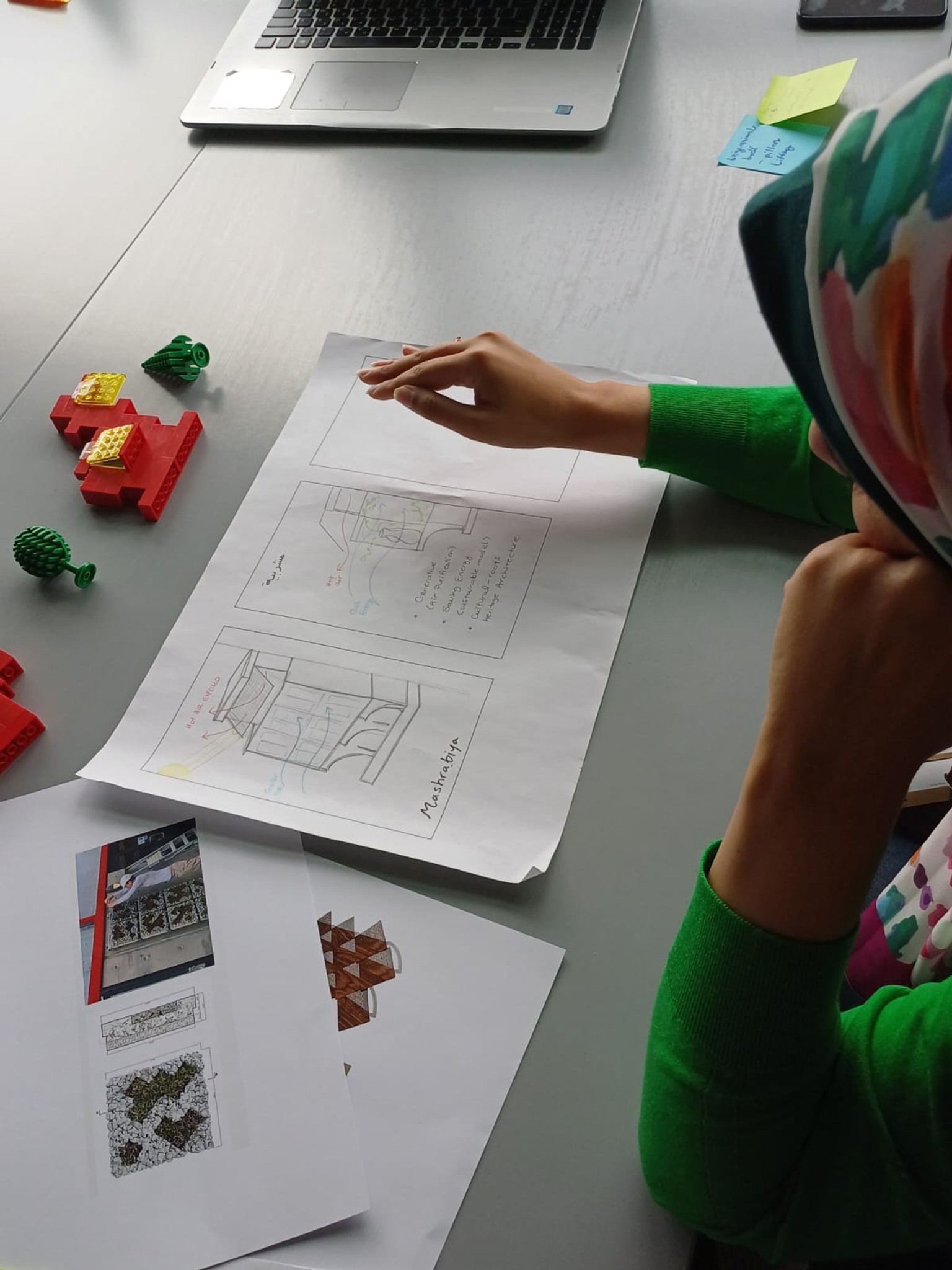
Human Building Interaction (HBI) and Design for Climate Change
Digital Sustainability





Abstract
This one-day workshop at ACM DIS 2024 invites participants to rethink relationships with data and materials in the buildings in the context of climate change; to form a relevant design agenda for Human-Building-Interaction (HBI) research.
Method
We used a roundtable discussion and a storyboarding session using paper prompts, post-its, and Lego to map the design landscape with 9 participants.
Takeaways
Shaped key research questions to drive this design agenda; and produced three example storyboards and Lego props as example responses to these research questions.
The workshop was organised by Lenia Margariti, Caroline Claisse, Ben Bridgens, Abigail Durrant, and Dave Kirk from Newcastle University, and Sara Nabil (Queen’s University).
Tell us more about Building Interaction (HBI) and how that relates to Climate Change.
Climate change poses unique challenges for the design of human-centred smart buildings and Human Building Interaction (HBI) research.
Harvesting the potentials of vast amounts of environmental and personal data accumulated in contemporary smart buildings, and the advancements in programmable, actuating materials and biomaterials - see CO2 harvesting materials for instance - new design opportunities for novel data interactions that address climate and health & wellbeing in the buildings are emerging.
Why did you set up a workshop to explore Human Building Interaction (HBI) and Design for Climate Change?
Relevant HCI research includes technologies to foster climate-sensitive behaviour in the buildings – for instance, physical, biomaterial and tangible feedback for climate awareness including air quality – passive, self-powered and compostable interfaces, bio-design for wellbeing in-place.

Building upon past relevant research, we organised a workshop entitled ‘HBI and Design for Climate Change’ at the Designing Interactive Systems (DIS) Conference last July. This workshop invited researchers, designers and practitioners to rethink our relationships with data and materials in the buildings within the context of climate change; contributing towards shaping a relevant HCI / HBI design agenda.
What did you do during the workshop?
The workshop included a roundtable discussion and a storyboarding session using paper prompts, post-it and Lego with nine participants in total. During the roundtable discussion, participants were asked to discuss what are the key research questions we should be asking within that space; and what are the key challenges and opportunities (and for whom).

This session concluded with drafting a set of questions to address when thinking of conducting a research project in this space. Briefly, these were:
- Who is the Human (we design for)?
- Who is the beyond Human (we design for)?
- What is the building (and beyond) / retrofitting strategy?
- What is the net-zero strategy (or should we think of buildings/interactions that generate?)
- What about AI & agency?
- How do we prototype & test prototypes at scale (thinking of the long-term and what remains)
The storyboarding session was an attempt to respond to research questions and challenges by envisioning three projects that address physical space, materiality, and interaction with data in the buildings in the context of climate change.

The participants worked in groups of three and using the provided prompts, templates, post-it notes, and Lego bricks, and then presented and discussed their stories. Presentations and discussion with participants were audio-recorded.
What were your highlights of the day?
It was great to come together as a team with people from different disciplines who are interested in exploring this novel topic and hopefully keep collaborating for future work! Overall, we got to spend the day with amazing people and unpacked novel and interesting sides of the research topic, and come up with interesting storyboarding of interactive experiences and building concepts.
You can read the workshop publication here: Margariti E., Claisse C., Durrant A., Bridgens B., Nabil S., and Kirk D. 2024. Human Building Interaction and Design for Climate Change. In Proceedings of the Designing Interactive Systems Conference (DIS '24). IT University of Copenhagen, Denmark